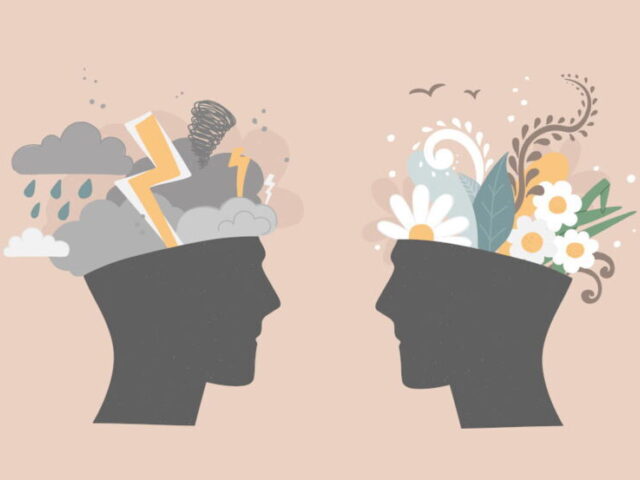Media Trends | Feb 16, 2022
The Second Brain - A tool to cope with the flood of information

Many people probably know the wish: with all the information you have to process, you basically need a second brain. Or at least a way to connect it to the computer and automatically transfer the knowledge you want to store. Classic to-do lists are simply not enough at some point. The alternative is to store knowledge associativity. We explain what that means here in the blog.
We are used to storing new information for ourselves in lists and folders. Most organizational tools also work with structures that are often arranged hierarchically. This means that important information ends up at the top and is arranged below it according to importance or urgency. Usually, these "silos of information" serve as a thought support to remind us of tasks that need to be done.
For classic to-dos, this is also sufficient. However, for those who work with a lot of information, pure storage locations are no longer enough at some point. The information stored in them must somehow be associated with each other in order to make sense. Here it can help to store the information in associativity. Associative thinking or learning means linking new knowledge with what is already known.
What is a second brain?
The concept stems from the desire to be able to outsource part of one's memory capacity. This concerns:
- Things you want to remember later
- Tasks that still need to be done
- Interesting or useful information that one encounters and wants to save "for later
- Results from research work
Ordinary lists and folders allow us to store this knowledge, and perhaps also to organize it according to importance and urgency. Apart from that, however, nothing else happens to the information. They are filed away and have to be reprocessed by us as soon as we retrieve them. If you work with a lot of to-dos, you might know the problem: you actually need additional notes explaining what you want to do with the information stored there.
The second brain is supposed to organize this information and prepare it in such a way that one mentally "creates space" in order to concentrate on acute tasks. Beyond that, however, it already performs the preparation by associativity linking the information.
How does such a tool help you in concrete terms?
In concrete terms, it means that you have a database that allows you to logically link information together. For example, you might be thinking about using synthetic videos for your marketing. To do this, you create a classic dashboard in the database of your second brain, i.e. a main page that functions like a website as an overview of all your information on the topic. During your research, you come across a video tutorial that helps you, so you save it to the dashboard. But at the same time, you notice that the creators of the video also offer tutorials on other topics that interest you. For example, on video marketing on social media platforms.
So you can immediately connect the video you saved on your dashboard to a page you created for video marketing on social media platforms. This way, you'll gradually build a network of information that's connected to each other.
Tool development with two or more brains
Steffen Bleher and Michael von Hohnhorst offer capacities, a tool to put the idea of the second brain into practice. In doing so, they benefit from their own experience in working with knowledge databases and in the associative handling of information from computer science. In program and code databases such as Github, information has long been stored in associativity.
At the same time, they are already figured out in their studies: outside the tech field, linked databases that store and categorize knowledge appropriately are not really used effectively yet. And even in the knowledge transfer of university teaching, people still rely on presentations made with PowerPoint and static formats. So the two founders set themselves a clear goal: the new way of organizing and linking information and people in a modern way and making it available outside the tech bubble.
The first target group on which the two of them concentrate is then also in the transfer of knowledge: teachers. The idea is obvious: teachers have to classify and categorize a lot of information and prepare it for teaching. The problem: implementing new methods is often extremely difficult and tedious in the teaching environment.
Brain jogging: Redefining the target group
After it becomes clear from the user research that the Second Brain does not initially seem to be a good solution for teachers, Steffen and Michael focus on the much broader area of knowledge workers. The term encompasses people who define their knowledge as their main professional asset, i.e. everything from academics, scientists and programmers to consultants and lawyers. Everyone who wants to collect as much information as possible and categorize and apply it to their work, and who therefore needs to be able to process it quickly and practically.
Another essential factor in the work of knowledge workers is the network and interaction with colleagues in the same or related professional fields. The second brain can be an enormous relief when personal databases offer the possibility to connect with other knowledge repositories. In this way, communities are created from information networks that are combined with each other, as they have been standard in the tech sector for some time now through platforms such as Obsidian. And capacities' claim to make this new type of information processing available to people outside the realm of computer science and programming is thus coming a good deal closer.
Next step: Build a strong network
The target group is defined, the tool is built. Of course, it now needs to find users who will benefit from it. Capacities are taking a highly focused approach early on: after an initial promotion via a newsletter, which is already followed by 300 downloads, they create a Twitter account and focus on interacting with their users. In this way, they not only see who has registered for the tool, but can also read off well from the number of people following the account who are really engaged with it. It proves them right: they generate almost 120 followers early on and, through inquiries from users, find that the target group not only uses the tool, but also actively participates in its development and design.
This gives capacities the opportunity to adapt the tool specifically to the target group that actually uses Second Brain. And this is how the strong network on which the tool itself is built is created.
Second Brain is a booster for open source
By interacting and linking knowledge, information and databases, a completely new way of processing information is possible. Capacities is already using this method to improve their own product and build a strong community to contribute to it. A very basic part of similar databases is this open source approach. Connecting knowledge and information accelerates, facilitates and improves processes, which is especially important for knowledge workers and anyone who has a lot of information to process: Research, creativity and the application of stored knowledge.

